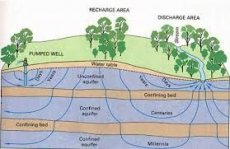New publications
Scientists have determined that there are huge amounts of water in our planet's mantle
Last reviewed: 02.07.2025

All iLive content is medically reviewed or fact checked to ensure as much factual accuracy as possible.
We have strict sourcing guidelines and only link to reputable media sites, academic research institutions and, whenever possible, medically peer reviewed studies. Note that the numbers in parentheses ([1], [2], etc.) are clickable links to these studies.
If you feel that any of our content is inaccurate, out-of-date, or otherwise questionable, please select it and press Ctrl + Enter.

Recently, scientists have managed to obtain evidence that under all accessible layers of our Earth there are large reserves of water, which are several times greater than those available on the surface of the earth.
The research team that conducted the study believes that they may have found the answer to a question that has long tormented scientists: how much water is there on our planet?
As co-author Steve Jacobson noted, this discovery will help explain the cycle of all the water on the planet, and it also explains the huge volume of water on the earth's surface. Scientists have been looking for the location of this water for decades.
A new study provides the first evidence for a theory that has been proposed for years: that vast amounts of water can collect in rock above our planet's hot core, called ringwoodite. The water is trapped under high pressure, which helps turn the rock into magma.
But many wonder how experts managed to find out what was happening at a depth of 650 km from the surface of our earth? Scientists explained everything quite simply: they were able to hear an echo.
There are 2,000 seismometers located throughout the United States, and using a network of these instruments, scientists have "heard" the vibrations that earthquakes create as they move deeper into the earth's crust.
The experts listened to the echoes of more than five hundred earthquakes. It is known that rock and water perceive vibrations differently, due to which the experts determined at what level there is water. But the scientists continued their research, modeling in laboratory conditions the pressure that exists at the level where underground water was discovered.
As a result, scientists have discovered that the mineral ringwoodite, like a sponge, absorbs water at the molecular level, resulting in it being more than 1% water (since water-saturated rock retains vibrations longer).
Until now, no one has seen this mineral because it is too deep for samples to be extracted. But scientists assume that deep water plays a primary role in the formation of magma.
Many people wonder whether people will be able to extract such useful resources in the future. But experts do not consider this possible, since it is unknown how the Earth will behave if the mantle is interfered with. But scientists consider the very fact of this discovery to be surprising.
Deep water is not water in the state we are accustomed to, it is essentially a fourth aggregate state of liquid, which is located inside the molecular structure of the rock. Temperatures above 1000 degrees Celsius and the enormous weight of the rock literally split water molecules into hydroxyl radicals, which easily attach to the crystal lattices of minerals.
As experts have noted, if all the deep waters rose to the surface of our planet, then only the peaks of the highest mountains in the world would be visible above sea level.
 [ 1 ]
[ 1 ]
